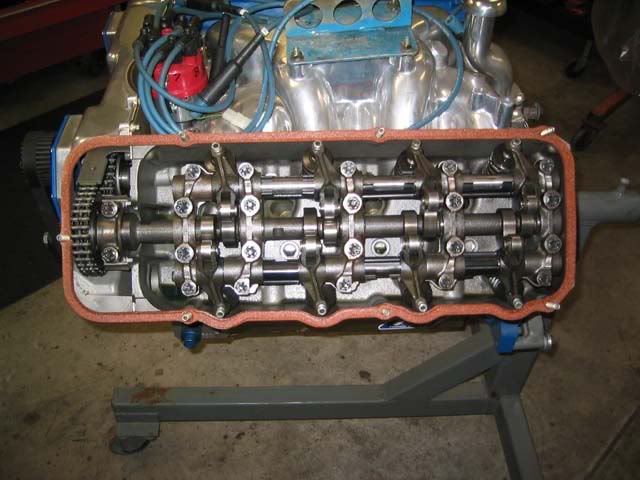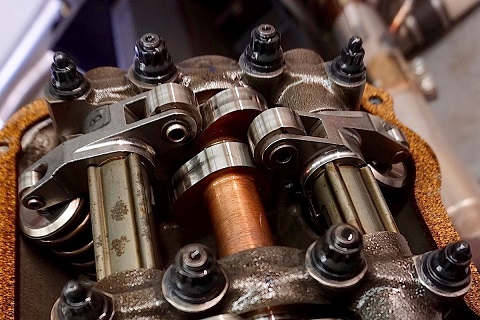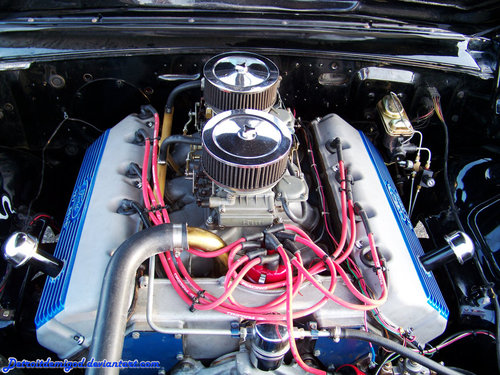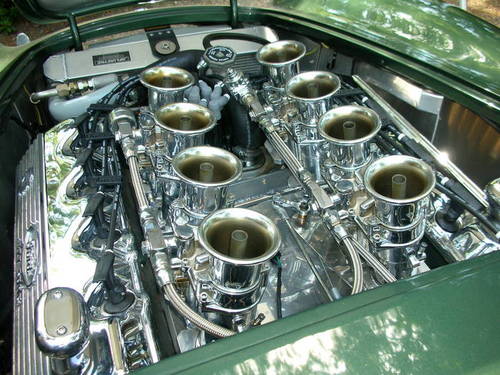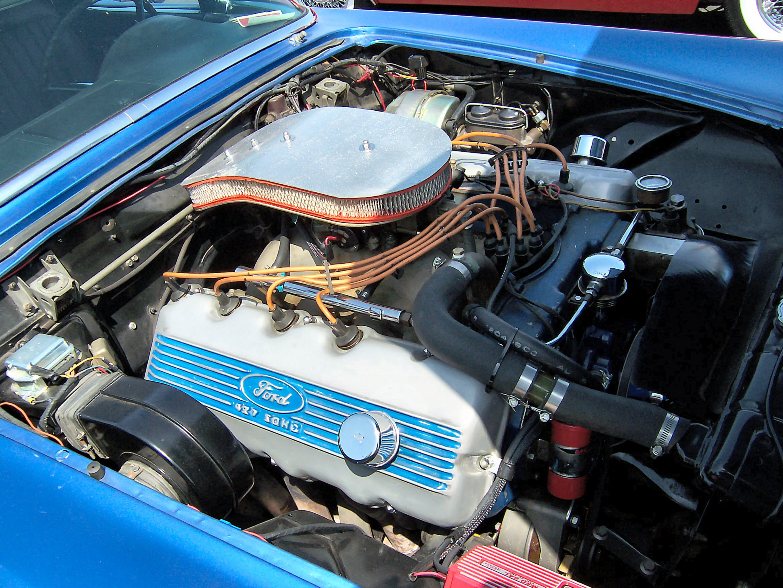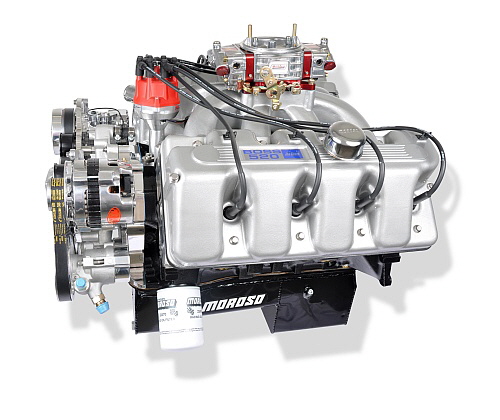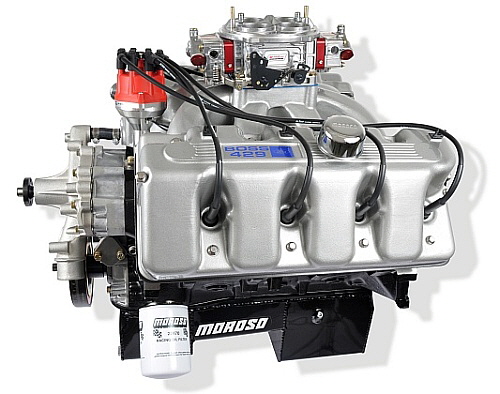http://www.jonkaaseracingengines.com/in ... cle&id=219
After 40 years of waiting, The Boss 429 has been resurrected with the availability of Complete Boss Nine Engines, Boss Nine Cylinder Heads, Intake Manifolds, Valve Covers, Gaskets, Pistons and associated parts.
In November, 2007, I decided to take the plunge and build all new Boss 429 Ford retrofit heads and related parts. I was betting on the fact that there were other Boss fans and Ford enthusiasts out there that wanted these new parts as badly as I did. Although they have only been out for a short while, I am happy to say that they have been well received and successful in whatever projects they have been used in.
Initially we built up some welded prototype heads followed by months of dyno testing. We tried many different ports, chambers, and valve trains, until there were successful results on assorted cubic inch combinations. Not only were we looking for increased power over stock, equally important was a user friendly, trouble free build up.
The stock Boss 429 parts were a masterpiece for their time,but slightly weak and difficult to work on. We have made every effort to fix anything that was troublesome or failure prone.
One of the first obstacles to overcome was the lack of available Boss Hemi blocks. They have cylinder head oil drains in a different location, and are mandatory with Boss heads.
We re- engineered the oil drains in the new heads to match up with the stock wedge locations. Now any 429-460 block can be used.
We wanted to be able to use a stock 460 head gasket. The deck of the head was made much thicker to provide the necessary clamping force.
The intake ports look stock at the entry, but the area at the short turn and the approach to the seat have been revised. The exit of the exhaust port, at the floor, has been made smaller, as well as the valve bowl under the seat. Both the intake and exhaust faces use the stock gaskets and bolt patterns. All original intake and exhaust manifolds will fit.
The chambers and spark plug location have been modified for resistance to detonation. The chamber size has been reduced so that a 466 will need a flat top piston for 10.5 compression. A stock Ford head would need a domed piston. (As in more complex and more expensive)
The rocker system was designed to eliminate the strange offsets and weaknesses of the stock Boss parts. We incorporated the rocker mounting “saddle” into the head casting, eliminating the mounting block. This saves about $400 when purchasing the rocker arm set. The exhaust rocker arms were engineered to move the pushrod away from the block deck. The head gaskets clear the pushrods, where with any other rocker design, the gaskets and block would need to be modified. (Getting dangerously close to the coolant holes in the deck)
Every effort has been made to have these heads look like the factory castings. The ends and sides have the casting recesses and are machined like the originals.
These heads will make about 100 HP more than the best P-51/SCJ head in similar builds using 460-521 cubic inches. At 600 cubic inch,expect about a 150 HP increase.
The extra power is a nice thing to have, but the real allure Of the Boss Nine is the looks, the “wow factor”!
• Bullet Proof - Stronger than stock
•
Uses stock 429-460 block
• Can be used on original Boss 429 block (please specify if using a original block, oil drain backs are in a different location)
•
Uses stock head gaskets for 429-460 (1018 fel pro)
•
Uses 429-460 stock internal oil drain back holes
• Uses all original Exhaust and Intake manifolds for Boss 429
• Rocker mounting blocks built into the heads
• Can be used with Manley BBC valves 11/32
• Revised Intake and Exhaust ports for more power
• Revised chamber design for detonation tolerance, CNC machined
• Uses stock Boss 429 valve covers
• Uses Kaase / W.W. Engineering rocker system
• Cylinder heads are stock appearing from the outside
• New Kaase design Intake manifold available in 4150 or 4500 series flange
• New stock appearing (Boss 429) valve covers available
Pricing on Boss Nine Cylinder Heads and Components:
• Bare Cylinder heads $1800.00 each. or $3600.00 pair.
•
Complete Boss Nine Cylinder heads $4350.00 pair.
•
W.W. Engineering / Kaase Boss Nine Rocker Arms 1575.00 set.
• Kaase Boss Valve Covers $650.00 set.
• Boss Nine Intake Manifolds (available in 4150 or 4500 series flange) $700.00 each.
• Kaase Boss Nine Ignition wire sets available in Black, Light, and Dark Ford Blue. $120.00
• Boss Nine Header Flanges $115.00 pair. available with stubs $210.00
• Boss Intake Gaskets $35.00 set
• Boss Nine Special built header gaskets $35.00 set
• Boss Nine Valve Cover Gaskets $45.00 set
• Boss Valve spring Changing tools $97.00 each.
•
Boss Nine ARP head stud kit with 12 point nuts $275.00 set
• Boss Nine Head bolt kit $120.00 set
• Boss Nine Stainless 12 point ARP Intake bolt set $35.00
• Powder coating options are available for both the Boss Nine Valve Covers and the Boss Nine Intake Manifolds $100.00
• Fel Pro Head Gaskets $40.00 each
• Diamond pistons available in Flat top, Dish and Dome, starting at $750.00 set
• Mahle pistons also available in Flat top and Dish (pricing coming soon)
• Factory original style Ignition wire clips for valve covers $50.00
• Crower Roller z-bar lifters $650.00 set
• Comp Cams Roller z-bar lifters $650.00 set
• Kaase Boss Nine pushrods $135.00 set
• Comp Cams / Kaase Custom Grind Camshafts $350.00
• Kaase Boss Nine spark plugs $32.00 set
• Boss Nine stainless ARP 12 point valve cover bolts $52.00 set
Jon Kaase Racing Engines is offering Boss 429 accessories: Rocker arms, Intake manifolds, Pushrods, New valve covers, Head gaskets, Valve cover gaskets, Intake gaskets, Pistons, Spark plug wires, Correct spark plugs, Camshafts, Lifters, Valve spring changing tools, header flanges, everything you need to finish your Boss Engine from complete packages to parts and pieces.

